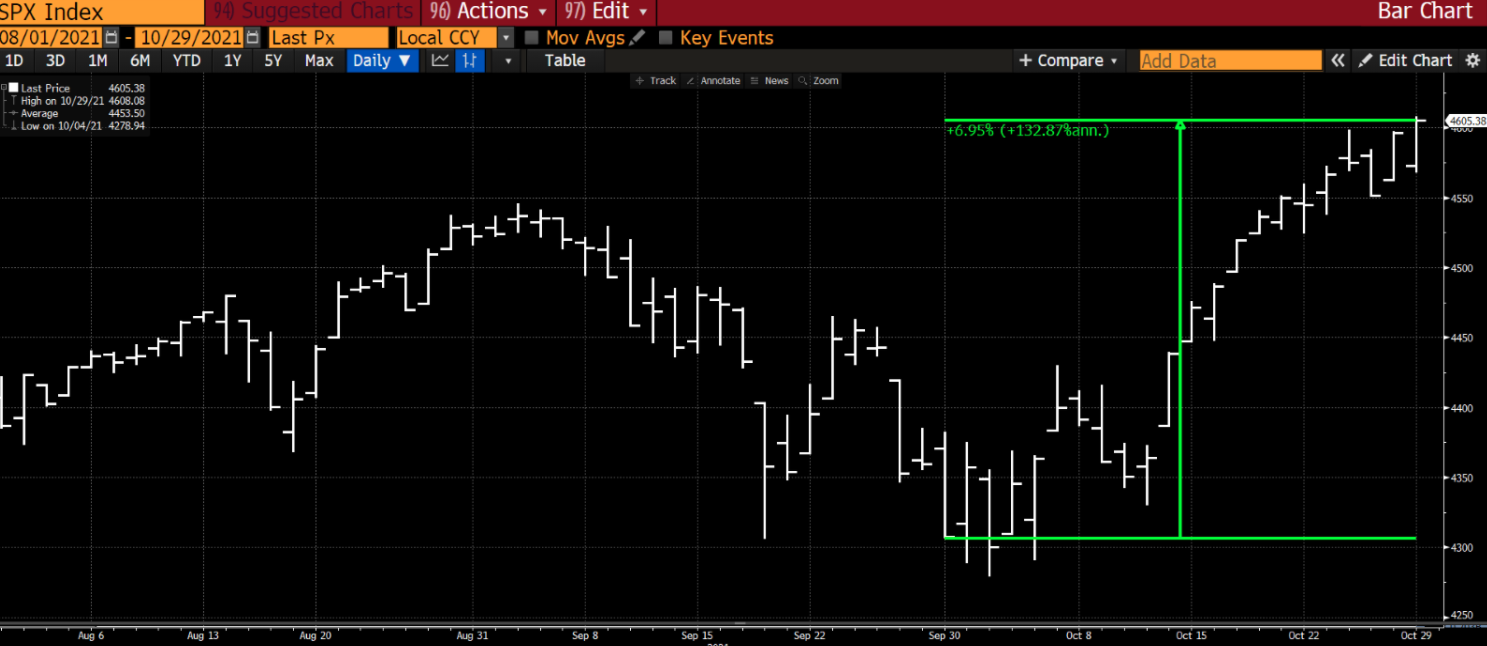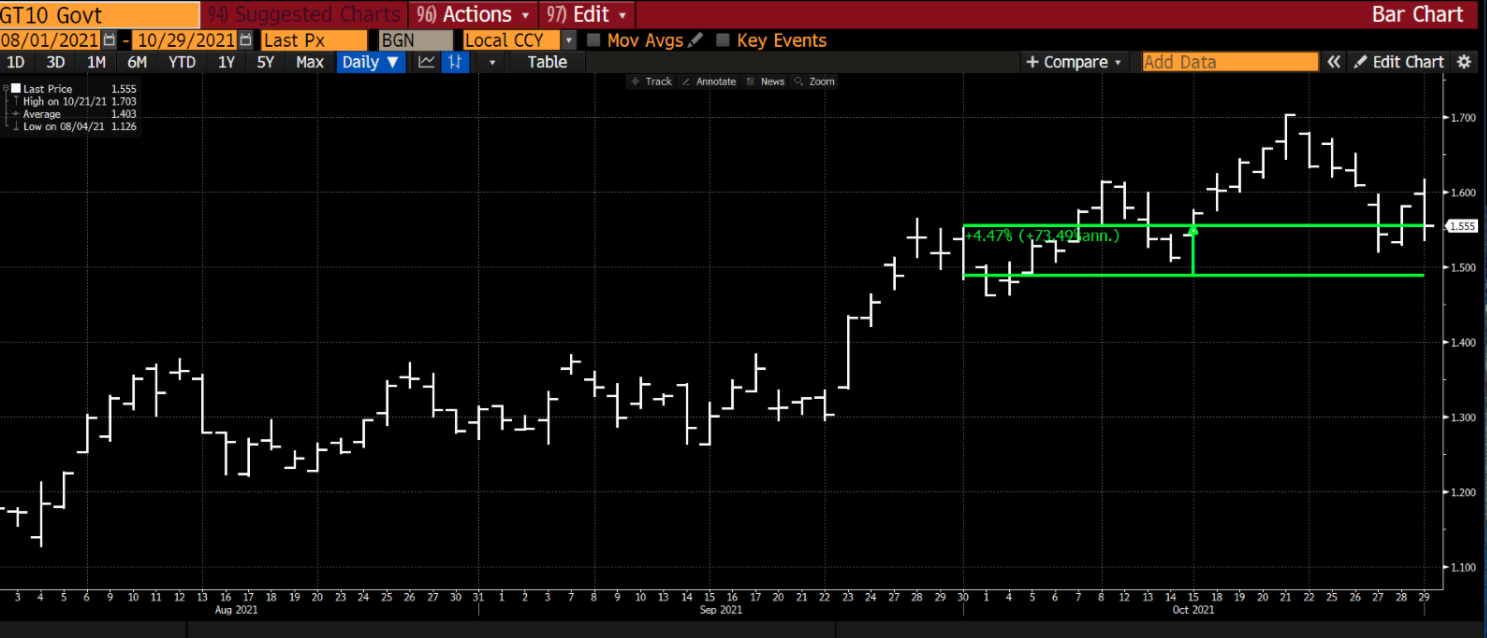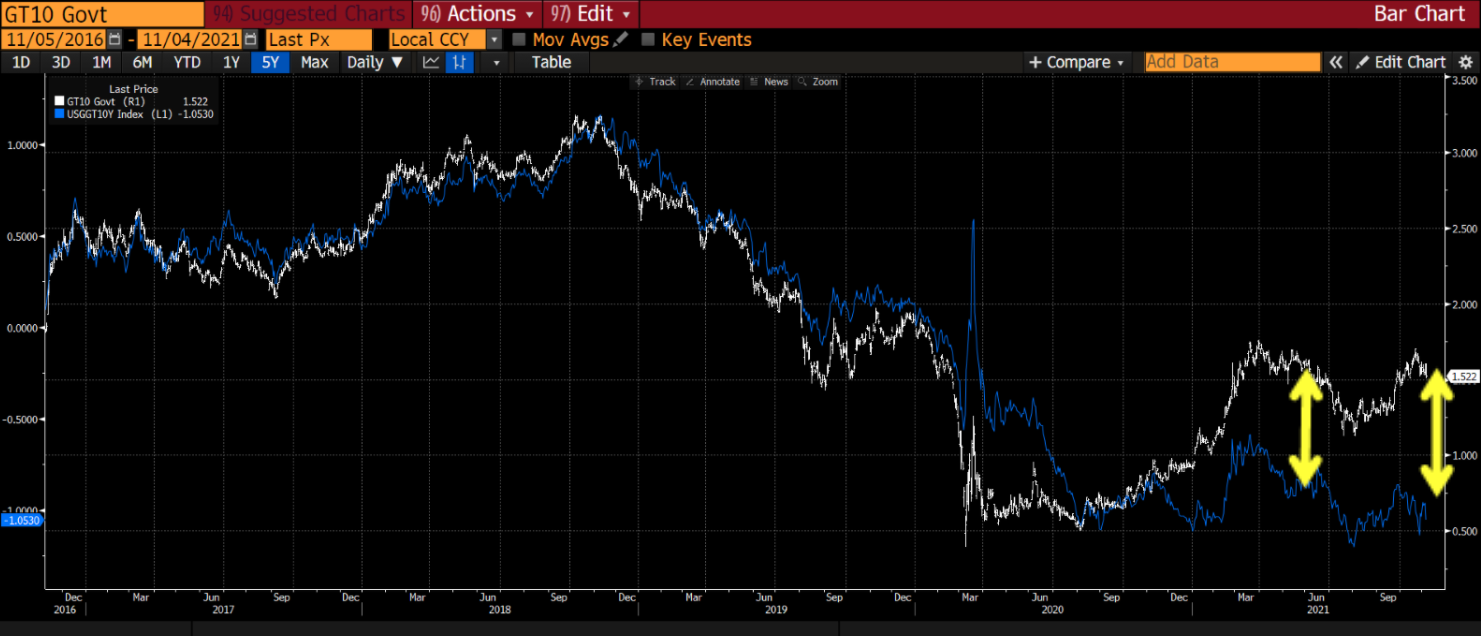Stableford Capital—October 2021 Review: Equities Bounce on Earnings
Equities bounced 7% in October after earnings proved better than feared (Exhibit 1). Heading into the month, the S&P 500 fell nearly 5% on fears of cost-driven earnings misses and a spike in interest rates. But inflation-driven costs were lower than expected, and while some companies like P&G lowered future outlooks, the impact was small enough that investors continue to view them as temporary (another dreaded “T” word; cousin of the detested “transitory”).
Equities Bounce in September

We expect this may be the case for a while. Many of the biggest risks—higher corporate taxes, faster than expected Fed tapering, and cost-driven earnings misses—are off the table for now. Higher costs may resurface in 2022, but with earnings season largely behind us, there is little opportunity for negative revision updates during 2021. This doesn’t mean that the risk has gone away, it just means that it is unlikely there is enough negative news in the short term to drive a major correction.
Real Rates Tell a Different Story
In contrast to equities, fixed income rates are telling a different story. While the 10 Yr. U.S. Treasury moved up slightly in October from 1.49% to 1.56% (Exhibit 2), the real story is the yawning gap between real and nominal yields (Exhibit 3). Recall that nominal yields have two components, real yields, and inflation. Real yields are the true cost to borrow, net of inflation (nominal – inflation = real).
Nominal Rates Up Slightly in October

As the 5-year chart in Exhibit 3 shows, real rates (blue line) and nominal rates (white line) usually move together. But over the last few months, an enormous gap has developed between the two. The lower real rates imply slower future growth: Bond investors require higher real rates as economic growth accelerates, yet real rates remain flat.
Meanwhile, the equity market is reaching new highs based on the expectation of higher earnings. Something’s got to give: Either the bond market is wrong and economic growth is going to be faster in the future, or equities are wrong and future growth will disappoint.
Yawning Gap Between Real and Nominal Yields

Time will tell what the true answer is. Forecasting gets increasingly imprecise the further out in time one goes. That said, the bond market is usually correct. As such, we remain aware of the downside risks but continue to participate by prudently investing in areas where we see advantageous return vs. risk opportunities.
Are you interested in making portfolio changes or getting a more in-depth analysis? Contact Stableford today by calling 480.493.2300 or simply request a copy of our Market Blast.
This market commentary was written and produced by Stableford Capital, LLC. Content in this material is for general information only and not intended to provide specific advice or recommendations for any individual. All performance referenced is historical and is no guarantee of future results. All indices are unmanaged and may not be invested in directly. The views stated in this letter are not necessarily the opinion of any other named entity and should not be construed directly or indirectly as an offer to buy or sell any securities mentioned herein. Due to volatility within the markets mentioned, opinions are subject to change without notice. Information is based on sources believed to be reliable; however, their accuracy or completeness cannot be guaranteed. Past performance does not guarantee future results.
S&P 500 INDEX: The Standard & Poor’s 500 Index is a capitalization-weighted index of 500 stocks designed to measure the performance of the broad domestic economy through changes in the aggregate market value of 500 stocks representing all major industries.
